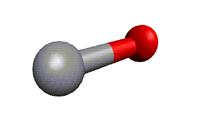|
The initial experimental measurements were taken from
(1) G. Klapper, F. Lewen, S. P. Belov, and G. Winnewisser,
2000, Z. Naturforsch. A 55, 441;
covering J" = 0 – 8. Transitions up to J" = 5
display resolved 13C hyperfine structure (HFS) splitting.
With respect to the first entry from July 2000,
more accurate low-J data (up to 2 – 1 near 209 GHz)
were included which come from
(2) C. Puzzarini, L. Dore, and G. Cazzoli,
2003, J. Mol. Spectrosc., 217, 19,
replacing the corresponding data from (1). In addition,
J" = 23 and 24 frequencies were added from
(3) J. C. Pearson, B. J. Drouin, A. Maestrini, I. Mehdi, J. Ward,
R. H. Lin, S. Yu, J. J. Gill, B. Thomas, C. Lee, G. Chattopadhyay,
E. Schlecht, F. W. Maiwald, P. F. Goldsmith, and P. Siegel,
2011, Rev. Sci. Instrum., 82, Art. No. 093105.
The uncertainty of the stronger HFS component of the
J = 6 – 5 transition was increase from 2 to 5 kHz.
The transition frequencies should be quite reliable up to
about 3 THz. Please note that the partition function
still only refers to the ground vibrational state.
The HFS splitting caused by the 13C nucleus
may be relevant in quiescent sources for low values
of J. Therefore, a separate
hyperfine calculation is provided for J" up to 2.
NOTE: The partition function
does take into account the spin multiplicity
of the 13C nucleus !
The dipole moment and its centrifugal distortion corrections
were taken from
(4) D. Goorvitch
1994, Astrophys. J. Suppl. 95, 535.
|
